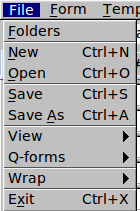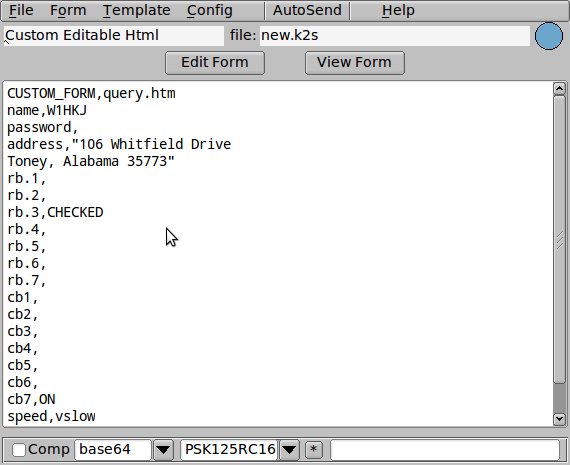Each year, Hawaii Emergency Management Agency in cooperation with a number of governmental and private agencies conduct a state-wide exercise to test and evaluate preparations for operations before, during and after a hurricane. The exercise, entitled Makani Pahili, will be conducted on Saturday, July 16, 2016.
These are the arrangements underway within the amateur radio community in preparation for participating in the exercise. If you know of any, please contact Ron Hashiro, AH6RH.
Be sure to click the REFRESH button on your browser to get the latest version of this page.
Enjoy, and feel free to drop me an e-mail if you have any questions.
Objective
The most frequently heard remark after Hurricane Iniki was that we as amateur radio operators should have been better prepared. The amateurs on Kauai and Oahu were challenged to exchange and deliver hundreds of messages accurately in a timely fashion each hour for many hours. The messages were a mix of short messages and some that were multiple pages in length. Most of the messages were handled by voice communications as that was the means that most operators had operational.
This year, the Makani Pahili 2016 hurricane exercise will stress the post-landfall aspects of hurricane relief and recovery.
A major part of the Makani Pahili exercise is for all operators to deploy and set up their stations and for the operators to gain experience, speed, accuracy and proficiency in sending and receiving American Red Cross Shelter status and ICS-213 messages between the nets and under net operating conditions. It tests existing arrangements and capabilities between the amateurs and the agencies and communities that we serve. It tests the operator's ability to generate and efficiently exchange FLDIGI messages under actual net operating conditions and changing radio propagation.
Stations are encouraged to generate and send test messages for the exercise, gain practice and become proficient BEFORE the next emergency or disaster. Stations are encouraged to generate ICS-213 messages that contain an actionable request as opposed to simply a message that has just status and is informational. This is so that the receiving party can generate a message containing a simulated reply. All stations will use "THIS IS AN EXERCISE MESSAGE" at the beginning and end of all messages.
Stations are also encouraged to study and practice their use of key words during emergency communications. This is formally known as phraseology.
Net Control Stations, bulletin stations and net liaison stations are encouraged to pass the net bulletins on the nets to simulate and practice passing net bulletins.
The amateur radio community recognizes Clem Jung KH7HO who has made major contributions in organizing and coordinating
the amateur radio component for Makani Pahili 2016.

Table of Contents
2016 Hurricane Makani Scenario
The hurricane scenario:
Makani Pahili 2016 will initially be a Category 4 hurricane. The MP2016 hurricane will affect all islands in the State of Hawaii.
The highlights of the exercise scenario:
On Saturday, July 16, 2016, the objective is to test the overall effectiveness and efficiency of collect information from the shelters and other locations in the field, rolling up the information to the County EOCs, and in turn roll up the information to the State EOC. The State EOC will enter the information into its incident tracking software as a repository to evaluate how well the information flowed accurately and timely to the destination.
Amateur radio communications will be exercised from 8:30 am to 12 noon. Primary communication for passing shelter reports and ICS-213 messages will be via VHF/UHF nets and/or HF nets to the County EOCs. Primary communications between the County EOCs and the State EOC will be via HF. State-wide communications will also use the state-wide VHF/UHF Repeater system.
MP 2016 amateur radio operations are expected on Kauai, Oahu, Maui and the Big Island.
Stations should send their completed (a)
station status report,
and (b) the American Red Cross
shelter report.

Saturday July 16, 2016
Hawaii Emergency Management Agency RACES/ARES.
The Hawaii EMA RACES/ARES will open then the net at 8:30 am on Saturday, July 16.
The preamble for the VHF/UHF and HF nets are available as a
MS Word Document and as a
Adobe PDF Document.
The preamble was updated on Saturday, July 16 at 7:30 am.

Oahu DEM RACES/ARES and American Red Cross, Oahu Chapter participation
DEM RACES members will send simulated ARC shelter reports to DEM EOC.
American Red Cross shelter managers and their staff will simulate the shelter in the school parking lot.
Amateur radio operators will act as shelter radio operators also also work from the parking lots.
No entry to classrooms will be made.

- District 1 - Oahu EOC
- Aiea High School
- Campbell High School
- Castle High School
- Kaimuki Middle School
- Kalani High School
- McKinley High School
- Waimanalo Elementary/Intermediate School
- Waipahu Elementary
Net Schedule:
Oahu HQ - KH6OCD
July 16, TBD - DEM EOC Open.
July 16, 8:30 - Start of net. Unlink Allstar repeaters. Communications Test with Oahu EOC, send messages from shelters to Oahu EOC.
July 16, 08:30 - 10:00 - Shelter simulation.
July 16, 08:30 - 12:00 - DEM Drill.

July 16, TBD - End of Net operations
DEM will be on the following frequencies:
VHF/UHF
- 146.66- PL 88.5 Kailua Repeater - Traffic
- 146.76- Mokuleia Repeater - Linked with FFMB repeater
- 146.80- PL 88.5 Mauna Kapu Repeater - Traffic
- 146.88- PL 88.5 Diamond Head Repeater - Traffic
- 146.98- PL 88.5 FFMB Repeater - Traffic
- 444.325+ PL 103.5 Waimanalo Repeater - Traffic
HF: 7.088 MHz LSB.

DEM will be using FLDigi MT63-1K for VHF/UHF and 7088 LSB.
ALLSTAR Net, Saturday July 16, 2016, 8:30 am - 12:00 pm
MP 2016 will start with a combined Oahu and State-wide ALL-STAR VHF/UHF repeater net. After the initial net preamble and information update is given, the link between the Oahu and the State-wide repeaters will be disconnected so that the Oahu DEM RACES/ARES members will exercise the Oahu scenario.
State-wide operations will be on the SCD VHF RACES repeater network, and the linked All-STAR repeater network 1147.02+ PL 103.5, 147.04+ (Lihue) PL103.5, 147.04+ (Mauna Loa) PL103.5, 147.06+ PL 103.5, 4444.350+ PL 103.5. Various links and/or repeaters within the network may be unavailable at the time of the net.
DEM will be on the following Oahu ALL-STAR frequencies:
VHF/UHF
- 146.66- PL 88.5 Kailua Repeater - Traffic
- 146.76- Mokuleia Repeater - Linked with FFMB repeater
- 146.80- PL 88.5 Mauna Kapu Repeater - Traffic
- 146.88- PL 88.5 Diamond Head Repeater - Traffic
- 146.98- PL 88.5 FFMB Repeater - Traffic
- 444.500+ Diamond Head Repeater - Traffic
Information on FLDigi
Hawaii EMA operations FLDigi will be on HF on 7.088 USB, FLDigi MT63-1K.
Stations are encouraged to use FLDigi to exchange ICS-213 messages digitally. FLDigi v3.23.16, FLmsg 3.00.01 and FLwrap v1.3.4 and may be downloaded at this web page. Stations may send and receive messages by holding the PC mike and speakers next to the radio mike and speakers. The preferred method is to use a Tigertronics Signalink USB Interface with the 6-pin mini-DIN (Data) interface cable to use with amateur radios manufactured after 1996.
Jack KH6DQ made a presentation and two note files to aid in setting up FLdigi and FLmsg.
To resend and relay an FLDigi message that you have received:
- Open the FLMSG program.
- In the main menu, click on File > Open
- In the window that opens, navigate to the NBEMS.files > WRAP folder
- In the lower right hand corner, change the file filter from ".CSV" and select "All".
- A list of WRAP file (received messages) appears, with the received date and time included in the file name. Select the message of interest.
- Announce on voice that you will be sending a message, then click on the "AutoSend" button on the main menu.
It it will resemble these screen shots on the w1hkj.com web site.


FLDigi Installation for Mac OSX

If you installed FLDigi and FLmsg on the Mac, you'll need to do this one modification in a Terminal Window in order to add a symbolic link to the hidden file folders and make it visible.
Additional References
Additional information and educational materials are available at:
Reminder on Test Procedure - Kerchunking repeaters is illegal
A reminder to ALL stations - especially newly licensed stations - that when testing access and coverage with repeaters to clearly identify your transmissions with your callsign and the word "Test" or "Testing". Momentarily keying your radio to activate the repeater to cause it to transmit without saying anything (known as "kerchunking" a repeater) is an unidentified transmission. Unidentified transmissions are a violation of FCC Part 97.119(a) and is illegal. Do not kerchunk a repeater, even once.
If you kerchunk repeaters, do not be surprised when you receive a notice from the FCC regarding your operations.
The correct procedure is to key your microphone, identify your transmission with your callsign and the word "Test" at the same time as you are keying down, then release the PTT switch and listen. (Example: "KH6ABC Test.") As a courtesy, another station on frequency may acknowledge your test signal with a signal report (Example: "KH6ABC, you are loud and clear. KH6ZZZ.")
Again, NEVER kerchunk a repeater with an unidentified transmission.
Copyright © 1997-2016 Ron Hashiro
June 30, 2016, updated July 16, 2016 DISCLAIMER: Ron Hashiro Web Site is not responsible for the content at
any of the external sites that we link to and therefore
are not necessarily endorsed by us.
